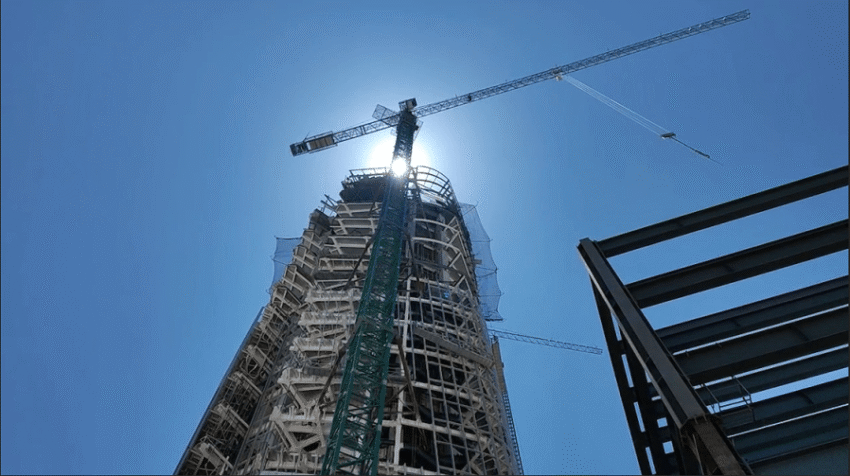JUAREZ, Mexico (Border Report) – Adrian Lui Chavira sweeps his hand toward metal beams and wall panels inside the 15th floor of a new high-rise in Downtown Juarez.
“All of that will be (electronic) screens. From here, we will be able to see and operate all the security cameras throughout the state,” said Chavira, the administrator of Torre Centinela (Sentinel Tower).
The $84 million building and its technology is the state of Chihuahua’s gamble to keep criminals in check by taking away something they have long enjoyed: Impunity.
Cameras and accompanying technology like license plate readers and face-recognition technology already have helped police in this Mexican northern border state apprehend dozens of murderers, kidnappers and thieves.
That includes the Oct. 3 capture of a gang of alleged migrant smugglers and sicarios, or assassins, by tracking a vehicle they repeatedly used to commit crimes. Their arrest and the seizure of 40 guns and “assault rifles” in their possession immediately cut down the number of homicides in Juarez, Chihuahua Public Safety Director Gilberto Loya said.
“The more resources our police forces have, the better the possibilities of bringing crime down,” Loya said on Monday. “Homicides come down, drug seizures go up and we have a better opportunity to recover (stolen) property.”
Mexican officials on Monday held an open house for El Paso and Juarez news media of the ongoing work inside the tower. Fifteen of the building’s 20 floors are “90 percent completed” though the technology component is absent and not included in that calculation.

Four hundred people including computer technicians, crime data analysts and police officials will work there, Chavez said. The tower should be in operation in the first semester of 2026.
In practical terms, the cameras are a visual deterrent for criminals, Loya said. So much so, that at least 20 recording devices have come under attack, some minutes before the commission of major crimes.
The growing number of arrests are another deterrent, as criminals begin to realize the cameras record their actions, the vehicles they used to reach their targets and even their faces.
For U.S. visitors, especially those with family ties in Juarez’s dangerous colonias, or working-class areas, the cameras may or not dissuade criminals from approaching them but at least will give them hope their property will be recovered or an attacker be brought to justice.
“It is important for all of our visitors, first of all, to dial 911 if something happens […] There will be an immediate response, not just from us, but from every (pertinent) agency,” Loya said. “To our visitors I would say all of this technology is meant to provide safety to their person, their property and their relatives here. We invite them to come.”
Loya said 11 smaller police tech centers have been built throughout the state and two more are planned. Whatever images officers in those other cities see also will be seen inside the tower in Juarez.
The two major cities in Chihuahua that still lack this tech-centric approach to crime prevention and crime-solving are Nuevo Casas Grandes – a known bastion of La Linea drug cartel – and the “magical town” of Guachochi in the mountains of southern Chihuahua, where eight people were murdered and some incinerated in a single incident late last week.
More security cameras will be deployed there, Loya said.
 Read: Read More
Read: Read More




